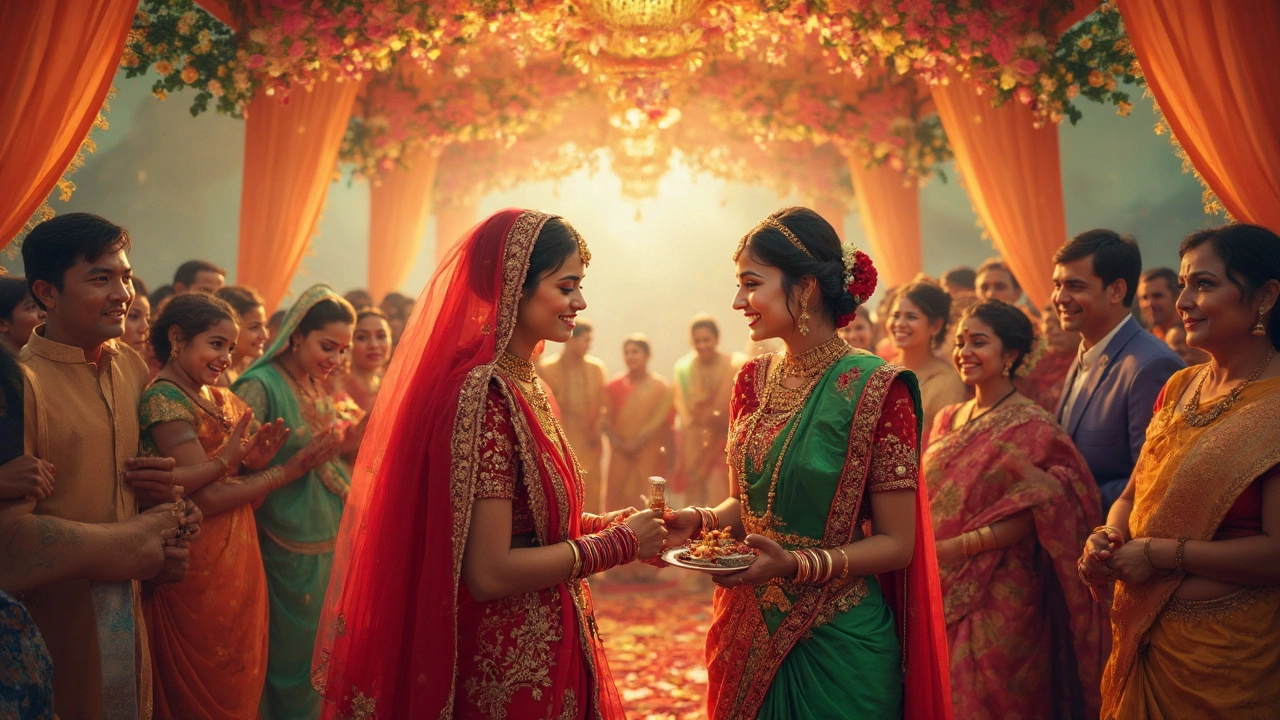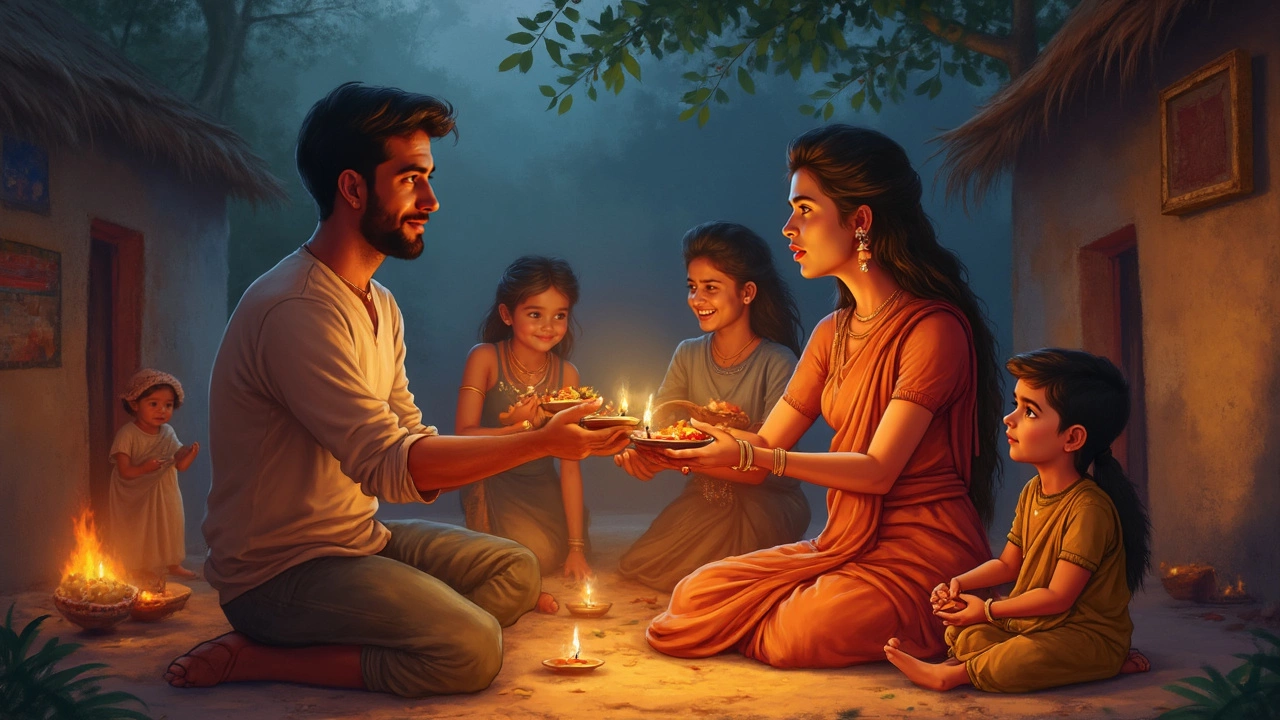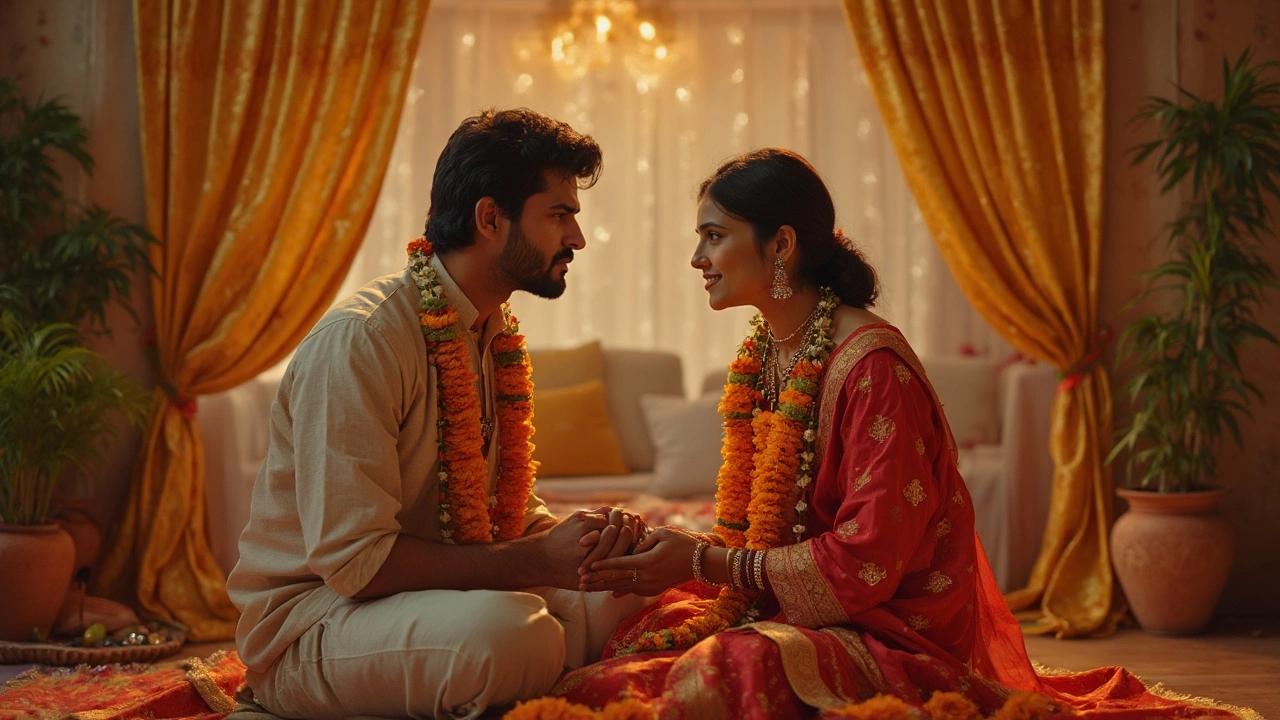
Ever wondered how Indians show affection? It's more than just holding hands or whispering sweet nothings. In India, love and affection are showcased in a variety of unique and culturally rich ways. It's like an ongoing festival of emotions where family ties and traditions play a starring role.
Family is a big deal in India, and it often comes first in the love department. Parents showing deep affection for their children is a daily affair, and the concept of a joint family means love is spread across larger groups, not just mom, dad, and the kids. This translates into caring deeply for extended family members, and that's love in practice.
- Family First: Love in Indian Families
- Romance Through Rituals
- Subtle Signs and Gestures
- Acts of Service Speak Volumes
- Festivals and Shared Celebrations
Family First: Love in Indian Families
In India, family isn't just a group of people living under one roof; it's a web of relationships that forms the core of Indian affection. The bonds within families are strong and affectionate gestures are woven into daily life. It's common to see multiple generations living together, where everyone has a role in caring for one another.
Parents in India often express love through physical gestures like hugs and kisses, but there's more to it. Emotional support is significant. Parents and grandparents frequently offer life advice and emotional counsel. This isn't a hands-off upbringing; it's hands-on in the best way.
The joint family system, where uncles, aunts, cousins, and grandparents share the same home, brings a different dimension to expressions of affection. Imagine a family gathering where laughter and stories fill the room. Such gatherings are opportunities to check in on each other, share meals, and offer support.
Marriage, too, is a family affair in India. Matches are often meticulously arranged (or at least blessed) by parents, highlighting the importance of family approval. This extends the circle of love and respect, making marriage not just a union of two people but two families.
Let's not forget the role of grandparents! They are often involved in raising their grandchildren, showering them with stories, wisdom, and extra treats. It’s not just about the older generation taking care of the young; there's a mutual respect and exchange that strengthens bonds.
Indian families also focus on celebrating achievements together. Kids’ academic success, career milestones, or personal accomplishments are occasions for family celebrations, reinforcing love and pride within the family unit.
| Generation | Role in Family |
|---|---|
| Grandparents | Wisdom and storytelling, childcare support |
| Parents | Emotional and financial support, guidance |
| Children | Respect and care for elders |
Romance Through Rituals
Rituals in India aren't just about tradition—they're a way to weave love into everyday life. Whether it's a simple prayer together or participating in a vibrant festival, rituals offer partners a way to bond beyond the ordinary. Imagine waking up to the aroma of incense and fresh flowers as you join your partner for a moment of meditation or a quick morning prayer to start the day. That's romance, Indian style!
One can't ignore the grandeur of Indian weddings. These aren't just ceremonies; they're multi-day celebrations packed with meaningful rituals. Take the 'Saptapadi' or 'Seven Steps' for instance. Couples walk around the sacred fire, promising eternal love and togetherness with each step. This ritual signifies unbreakable bonds, both romantically and spiritually.
"In the beauty of rituals lies not just the promise of togetherness, but the art of cherishing by doing," says Aditi Kothari, a cultural expert from New Delhi.
Not all Indian affection needs a grand backdrop. Festivals like Diwali and Holi are perfect venues for showcasing love among family and friends. On Diwali, exchanging sweets and gifts is a big deal and reflects more than just good taste. It's about sharing love and joy. During Holi, the festival of colors, splashing vibrant hues on each other isn't just playful. It's a joyful, colorful expression of love and unity.
- Rakhi: A special festival where sisters tie a decorative thread (Rakhi) on their brother's wrist, symbolizing love and protection. It’s a beautiful representation of love beyond romantic ties.
- Karva Chauth: A day where wives fast for their husbands’ long life and prosperity, reflecting devotion and selfless love.
So, the next time you find yourself amidst an Indian celebration or ceremony, pay attention to these expressions of affection that go beyond words. They tell stories of love in ways that are uniquely Indian, wrapped in rituals that have stood the test of time.

Subtle Signs and Gestures
In the land of vibrant festivals and grand gestures, you might be surprised to learn that Indian affection often comes wrapped in subtlety. It's not always about big, showy displays. Instead, many Indians express love through quiet gestures that speak louder than words.
Take eye contact, for example. A lingering glance can say a lot without uttering a word. In many places, direct eye contact might be considered forward, but in India, especially within certain relationships, it can be a way to express warmth and understanding.
Let's talk about small gestures. Like the way someone might ensure you've eaten before they sit down to eat themselves. This isn't just good manners; it's a form of caring and looking out for others—an ingrained part of Indian culture.
Touching feet to show respect is another important gesture. This isn't a romantic gesture per se, but it underscores the respect and love one holds for elders. In some contexts, an affectionate pat on the back or a gentle touch on the head may convey warmth and care.
- Caring for your partner's family? That's affection in action, showing love and kindness not just to them but to those they cherish.
- Cooking a favorite dish without asking? It's a love language that says 'I know what you like, and I want you to be happy.'
These expressions of affection are deeply rooted in understanding and empathy. They're the everyday ways Indians convey love without making a scene. After all, the little things often have the biggest impact.
Acts of Service Speak Volumes
In India, actions often speak louder than words, and acts of service are a big way people show love. It's not just about grand gestures; even simple daily tasks can convey deep affection. Imagine waking up to find your favorite breakfast already made or someone ironing your clothes without being asked. These small acts say 'I care' in a language everyone understands.
One classic example in Indian households is when parents or spouses get up early to prepare a meal even if they have a busy day ahead. This tradition of making sure loved ones are well-fed is not just about the food itself but the care and time put into it. Think about a spouse fixing something around the house or helping with chores, like running errands together or doing grocery shopping for each other. It's all about being there and easing each other's burdens.
Interestingly, studies have shown that 60% of Indians feel that doing something for someone else is the best way to show that you love them. This makes sense when you consider the family-centric culture, where contributing to the household's well-being is a shared effort.
These acts can extend beyond family, too. Neighbors might lend a hand in times of need or share a meal cooked with love during festivals. Simple things like offering a ride or helping someone's parents with a task are common gestures that reflect Indian affection. It's a ripple effect of kindness that connects people, turning daily interactions into opportunities to express love in practical ways.

Festivals and Shared Celebrations
In India, festivals are a huge deal, like, lights, sweets, colors—the whole shebang! These celebrations aren't just about fun; they're all about spreading love and cheer among family and friends, making them a prime avenue for Indian affection to shine. Each festival carries its own way of expressing love and togetherness.
Take Diwali, the festival of lights, for instance. Families gather to light lamps, share sweets, and exchange hugs and gifts. It's like saying ‘I love you’ in a thousand ways. The act of giving sweets is not just about the sugar; it's about the sweetness of the relationship. Families often open their doors to share the joy with neighbors and even strangers, creating a community bond based on love and affection.
Then there's Holi, the festival of colors. People throw colored powders and water balloons, as a way to forget old grievances and renew friendship and love. It's riotously fun and perfectly embodies the affectionate, playful side of relationships. It’s all about having a blast together and celebrating the vibrant hues of life and love.
Raksha Bandhan is a sweet festival centered around the bond between brothers and sisters. Sisters tie a rakhi or a colorful thread on their brothers' wrists, symbolizing their love and prayers for their brothers’ well-being, while brothers promise protection and often give gifts in return. It's a simple yet deeply meaningful gesture of family affections.
In these celebrations, the importance of love is front and center. Whether it's through food, rituals, or simple togetherness, festivals provide the perfect backdrop for expressing Indian cultural love in a vibrant and heartfelt manner.